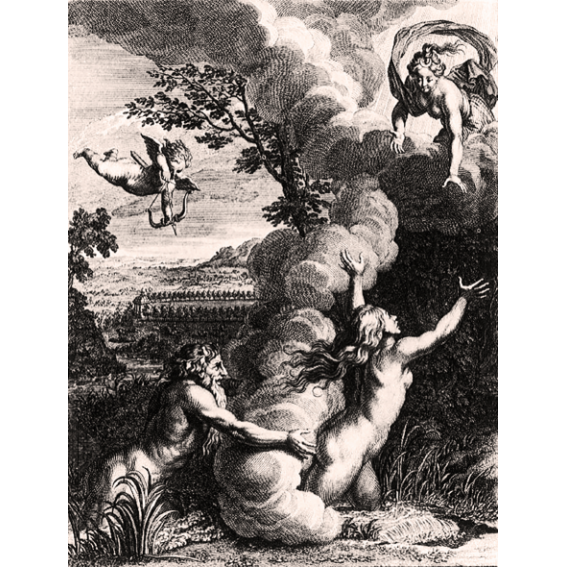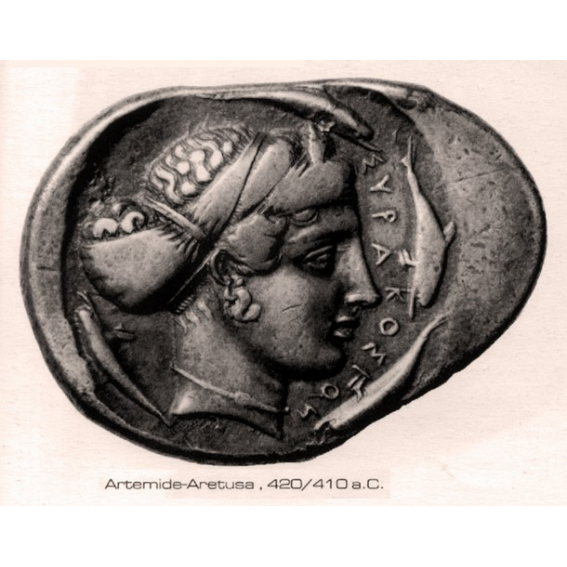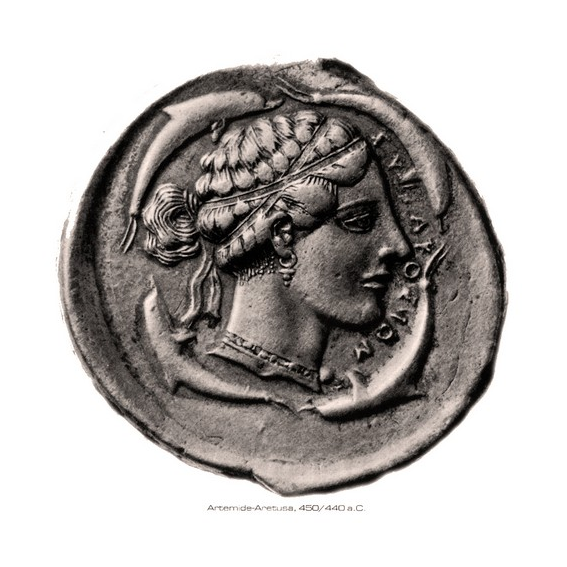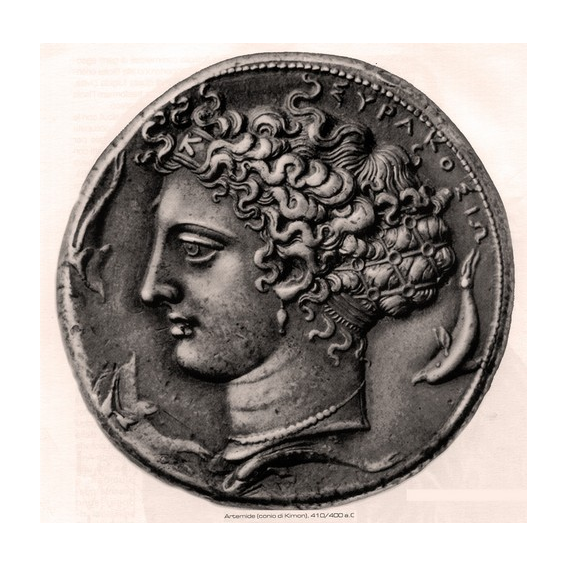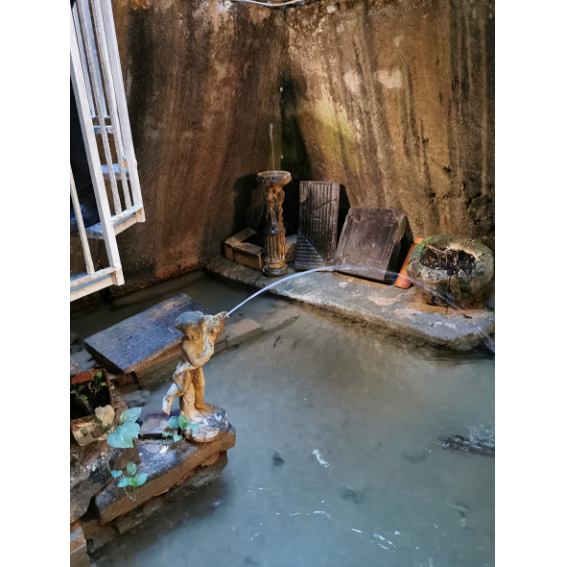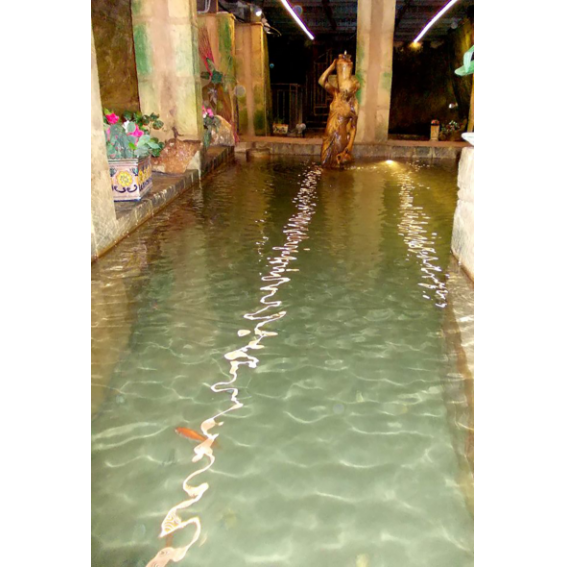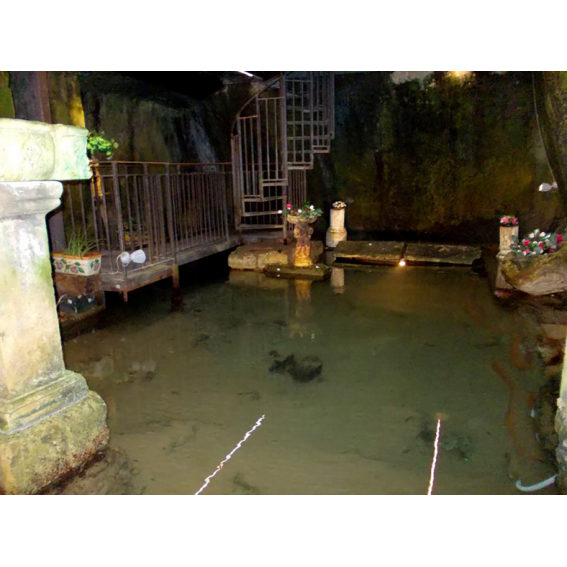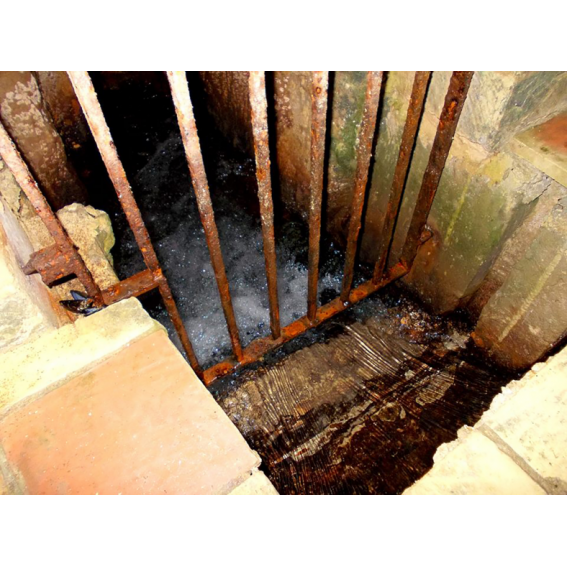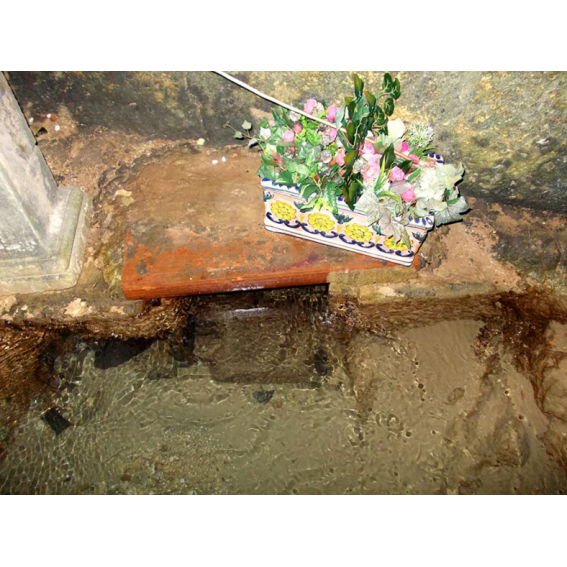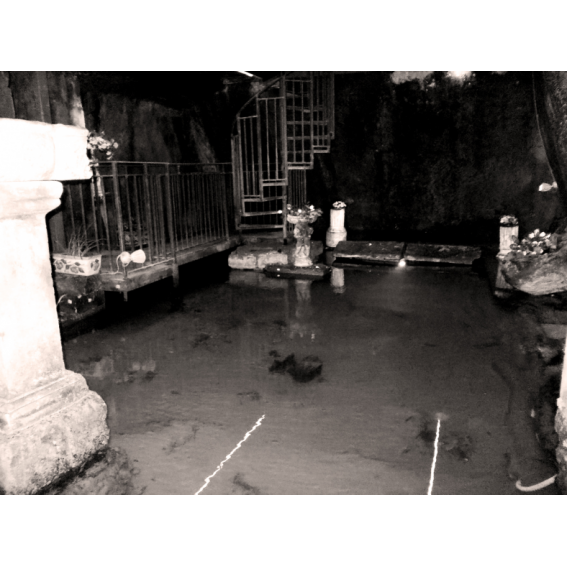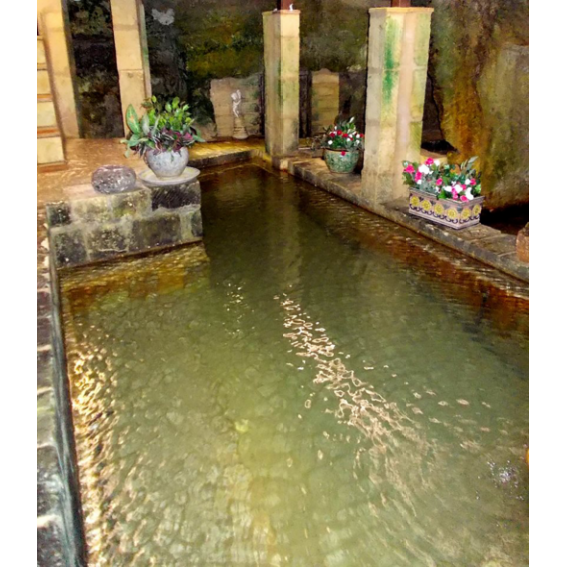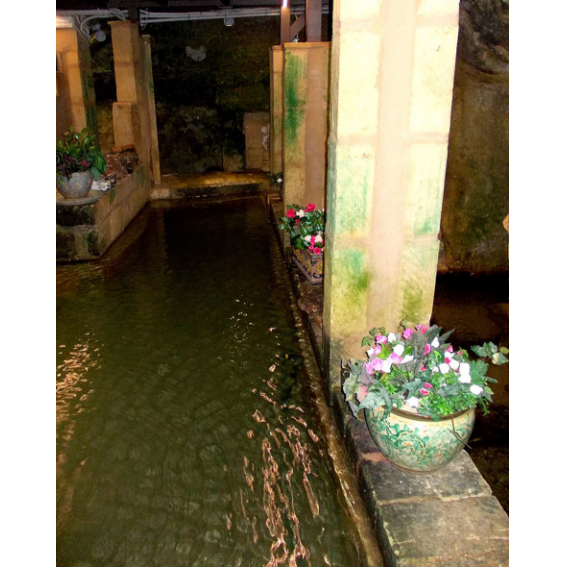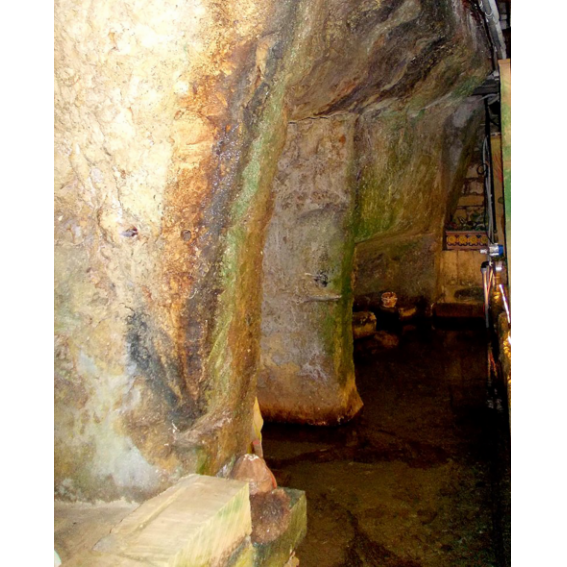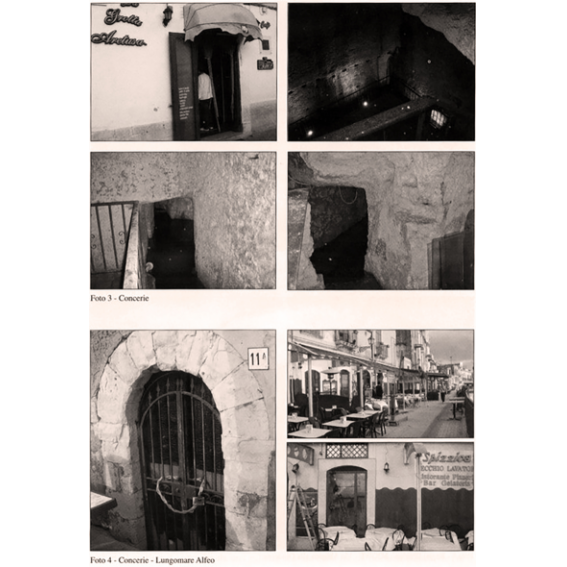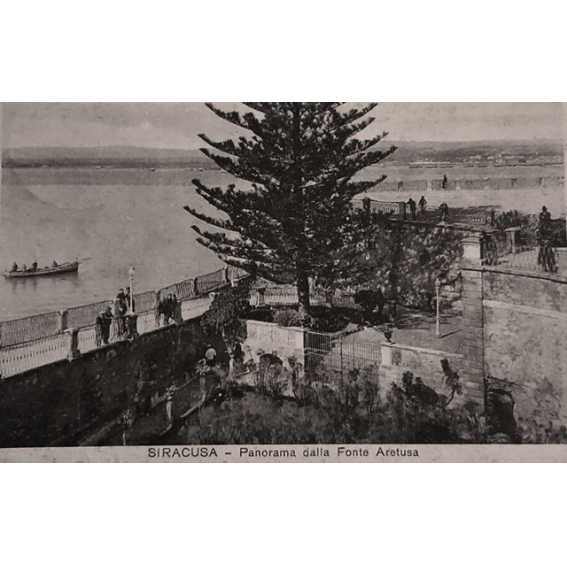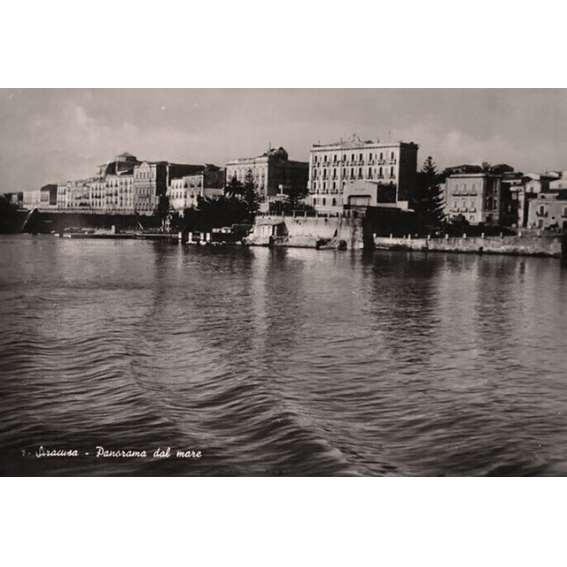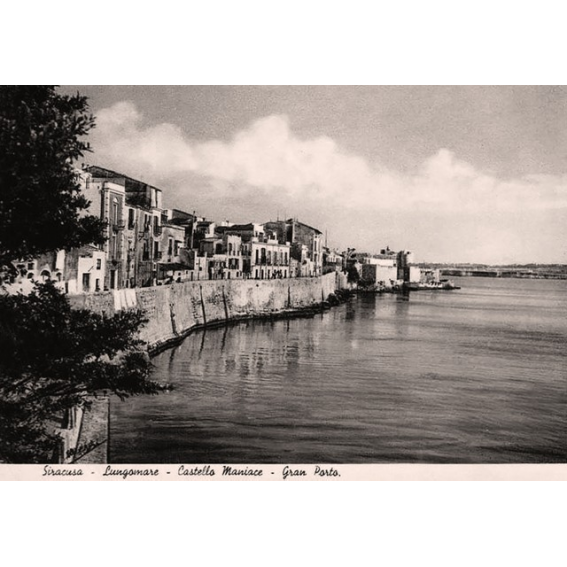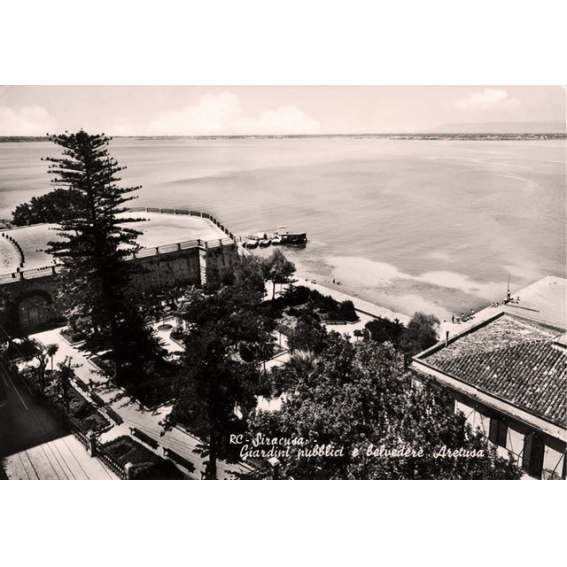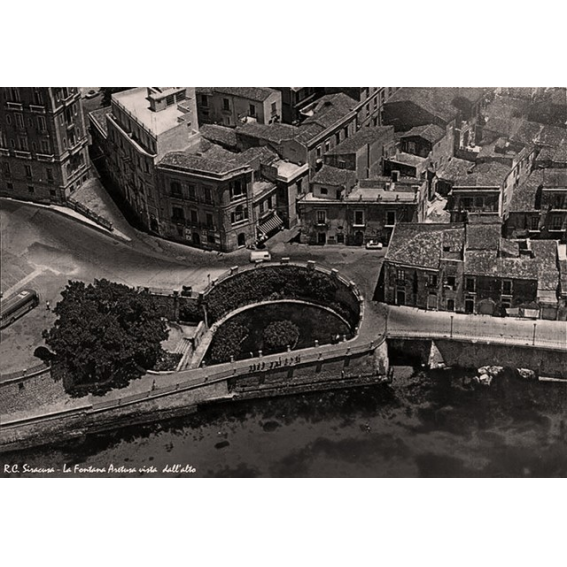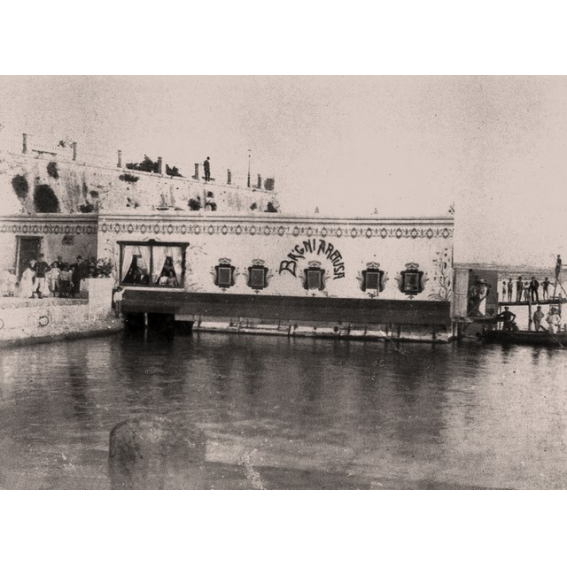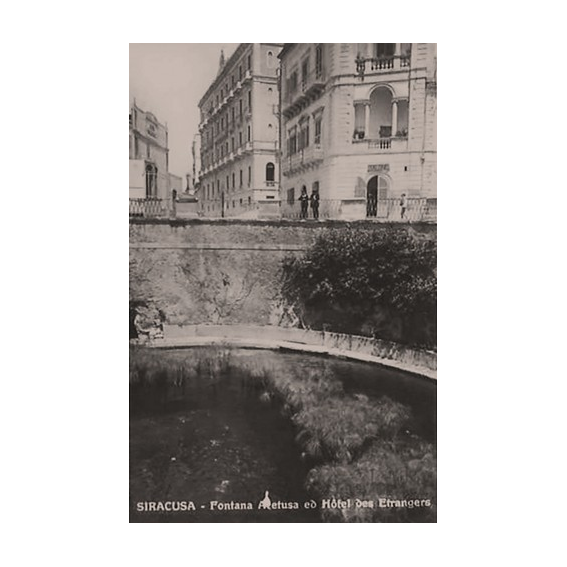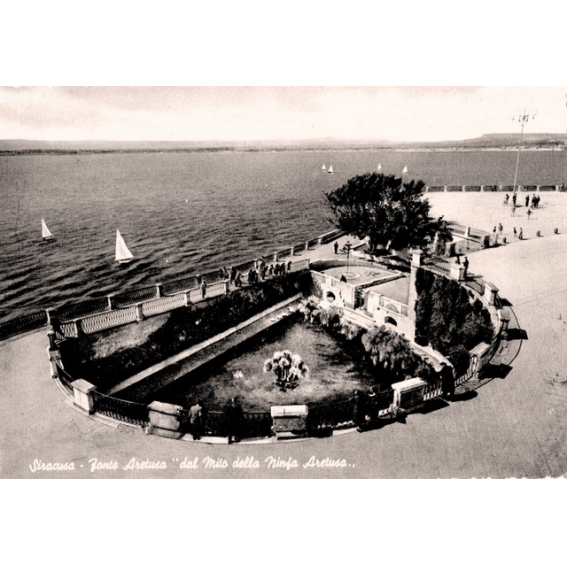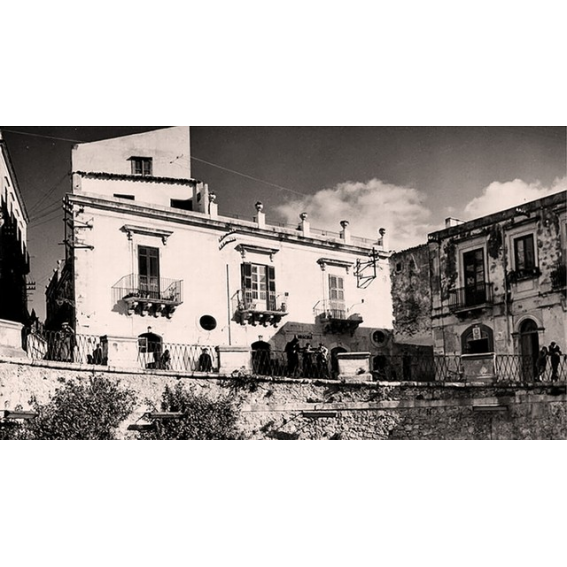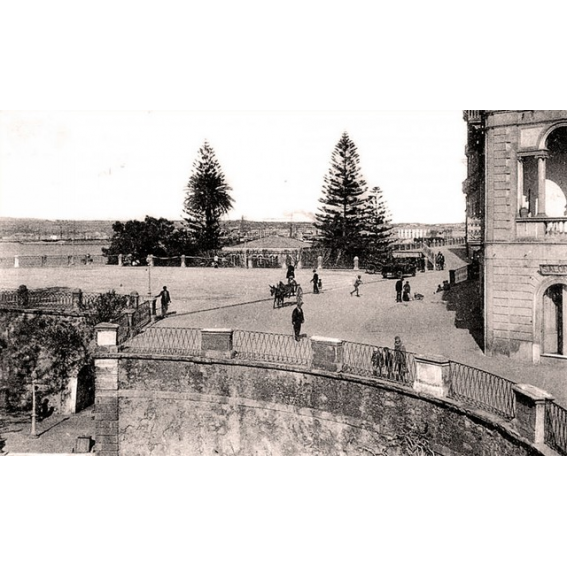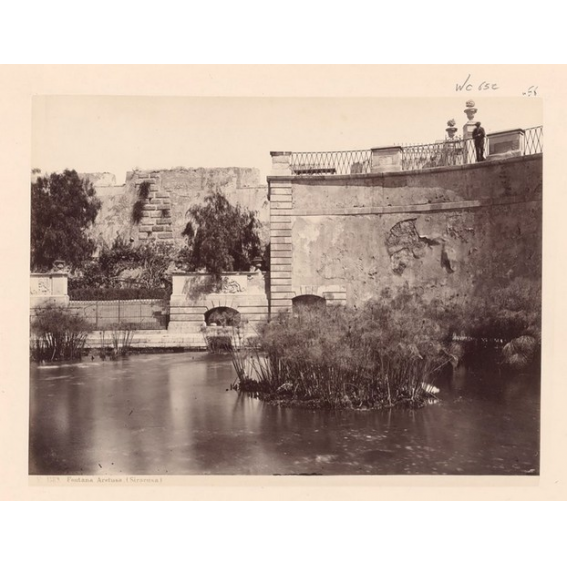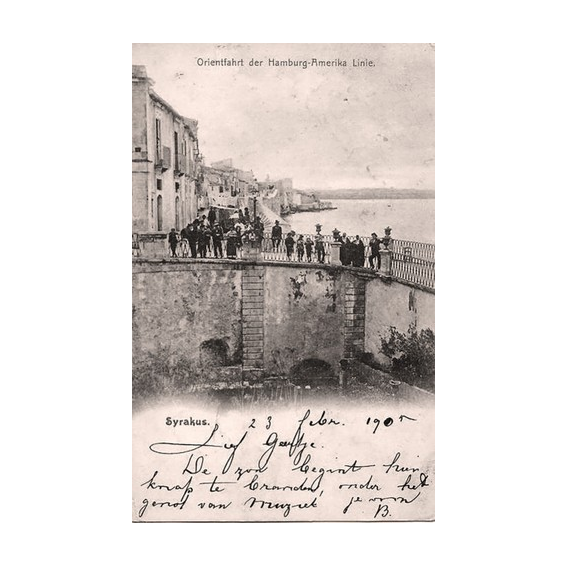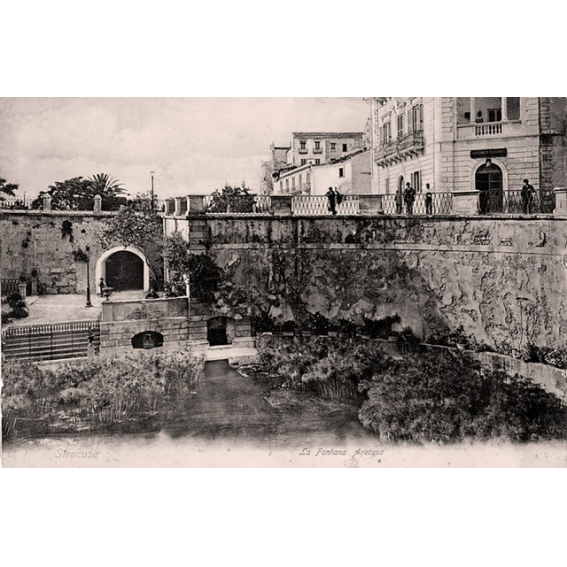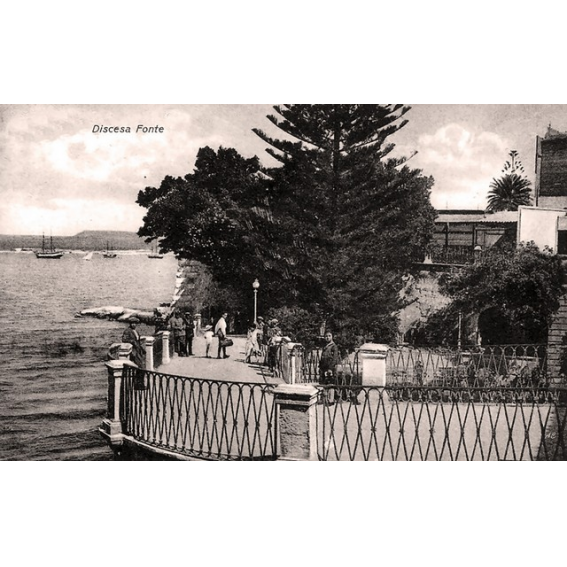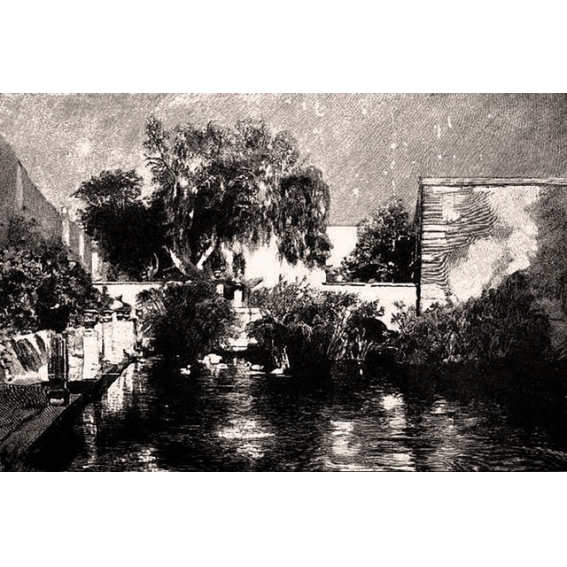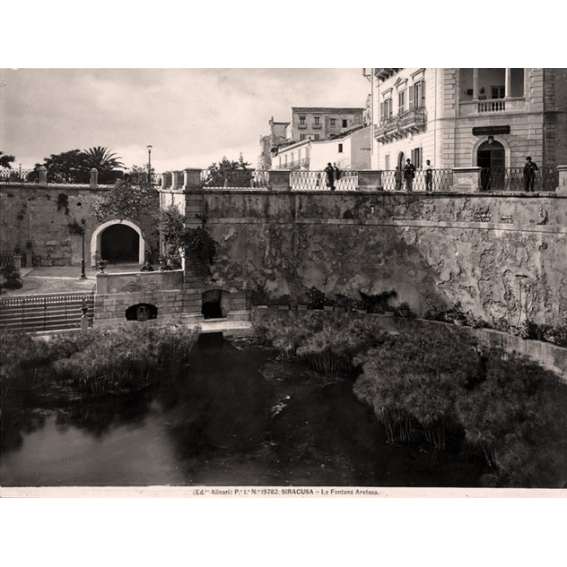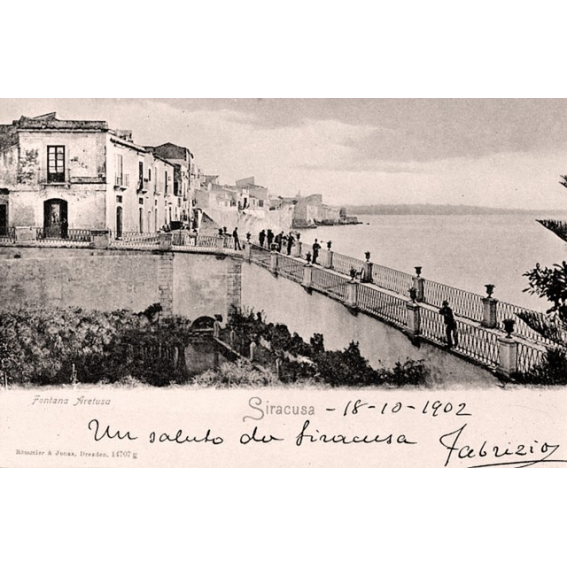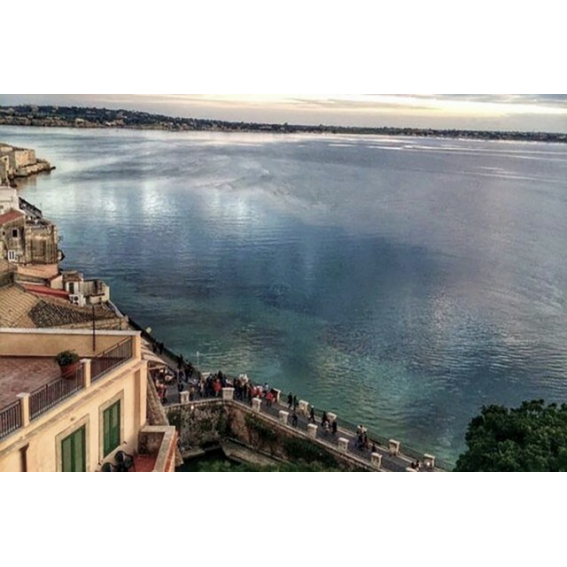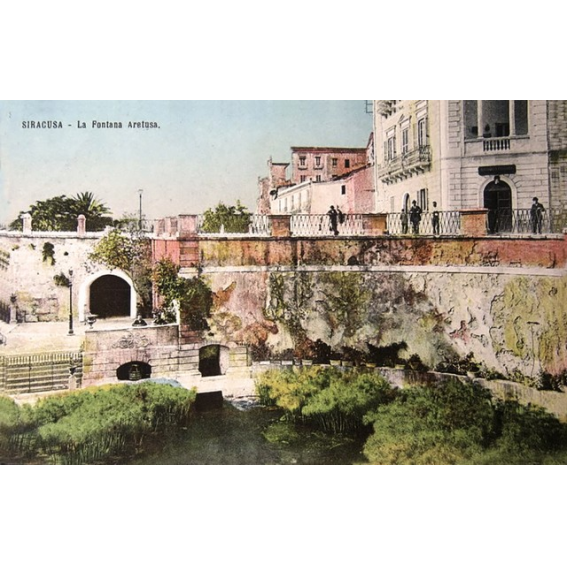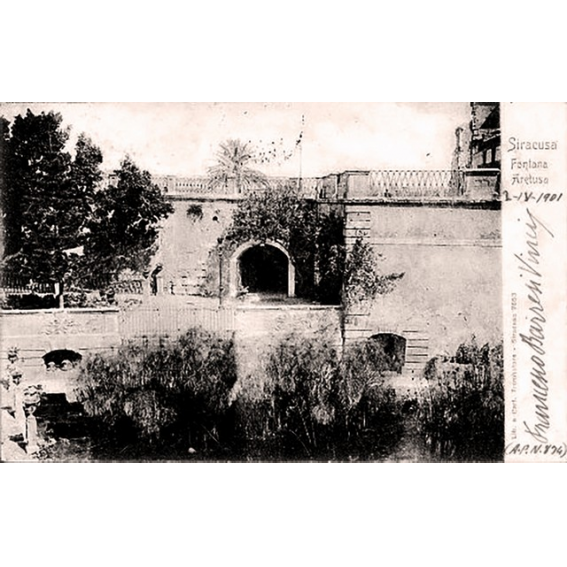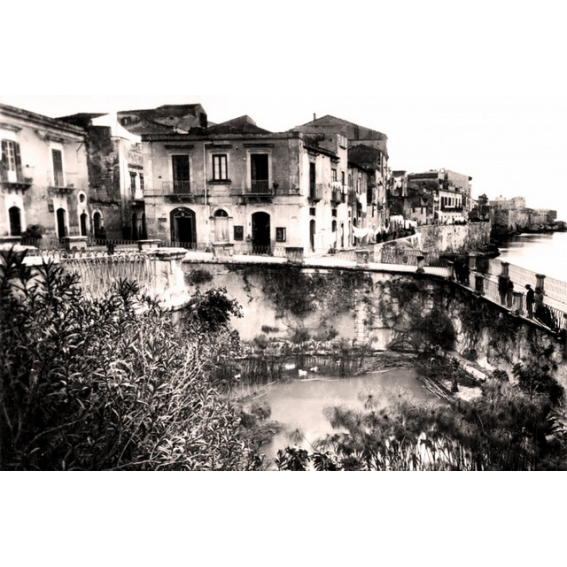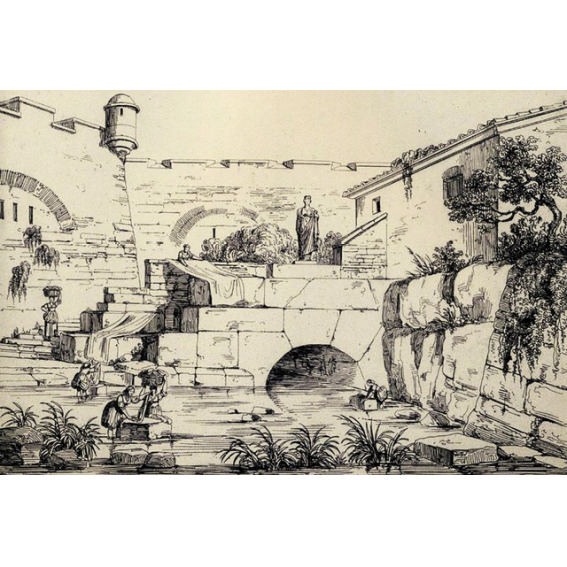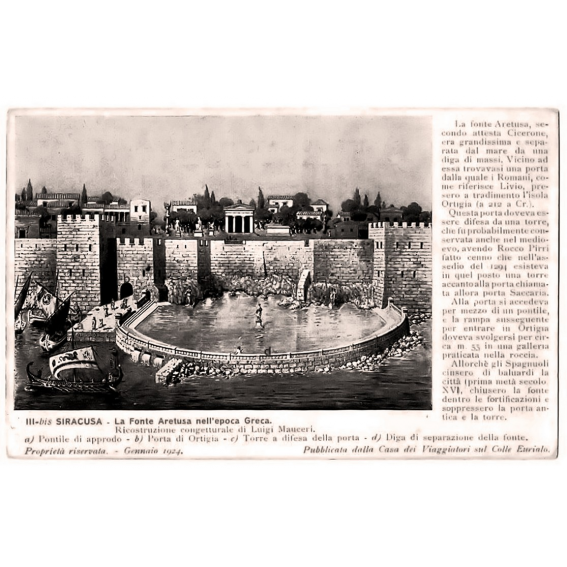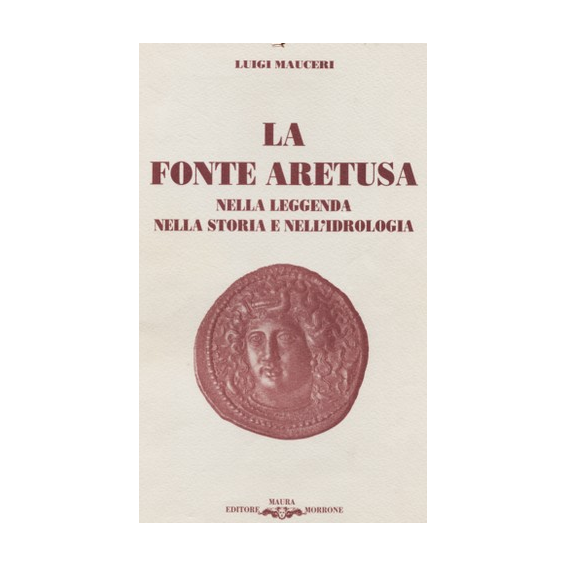fonte Aretusa



fonte aretusa anni 20

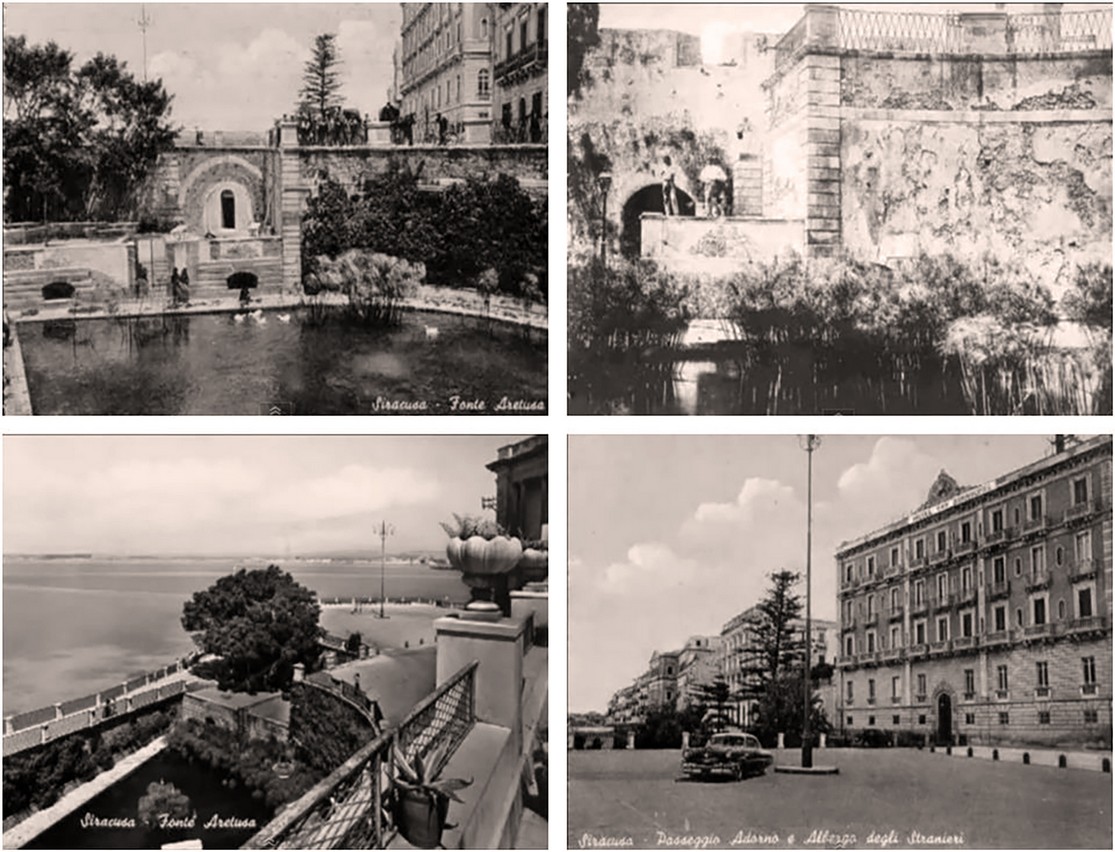


«Un'isola, Ortygia, giace sull'oceano nebbioso
Di contro a Trinacria dove la bocca di Alfeo
Gorgoglia mescolandosi con le fonti della vasta Arethusa».
Così l'Oracolo si pronunziò rivolgendosi ad Archia (Archia, secondo una tradizione riportata da Tucidide, fondò Siracusa, verosimilmente nell'anno 734 a. C. Egli discendeva dalla stirpe degli Eraclidi di Corinto).
È una storia di miti e di leggende che ha riempito le pagine della letteratura di ogni tempo. Da Pindaro a Silio Italico, da Virgilio a Pindemonte. da Ovidio ai contemporanei, la storia della letteratura ha un continuo ritrovarsi dinanzi alla leggenda della ninfa Aretusa.
Leggenda a cui neppure gli storici seppero rinunziare, così da Cicerone a Fazello, da Edrisi a Mirabella, la Storia di Sicilia si proietta affascinata tra il mito e la realtà della celebre fonte. Nell'avventura di Alfeo, misteriosamente celata dalle acque del Mediterraneo, c'è il grande bisogno degli isolani della colonia di sentirsi legati alla madre patria, anche se da una leggenda. «Alfeo vien da Doride intatto, infin d'Arcadia per bocca di Aretusa e mescolarsi con l'onde di Sicilia» (Virgilio).
«La fonte cambiò di colore per effetto dei sacrifici dei buoi fatti ad Olimpia» (Strabone). Alfeo, secondo il sentimento popolare, accorcia le distanze tra la Grecia e Siracusa e addirittura in certe occasioni diviene portatore diretto di notizie e di fatti. Sentire le sue acque gorgogliare nella bocca d'Aretusa significava per i sicelioti sentire respirare la stessa patria natia. Che i coloni si sentivano fortemente legati alle proprie città d'origine è documentato anche dal particolare senso di nobiltà e di pregio che essi davano alla propria radice greca.
«Le serve che son tue va' a comandare:
comandi a quei di Siracusa? ed è
ben, che ciò non abbi ad ignorare:
d'origine Corintia noi siam scese,
come Bellerofonte, e favellare
in lingua costumiam Peloponnese..
. (Teocrito, «Le Siracusane»).
Al tempo dei romani la fonte veniva descritta come «fons... plenissimus piscium, qui fluctu totus operiretur, nisi operiretur, nisi munitione ac mole lapidam diiuncutus esset a mari» (Cicerone).
Nel Medioevo fu vista come «meravigliosa sorgente che s'appella An Nabbudi» (Edrisi Geografo arabo vissuto nel sec. XII. Viaggiò a lungo in Spagna e nell'Africa centrosettentrionale come dimostrano le scrupolose notizie che da di questi luoghi nei suoi scritti. Per incarico di Ruggero II iniziò nel 1138-1139 la compilazione di un'opera che illustra tutti i paesi del mondo allora conosciuti, intitolata «Sollazzo per chi si diletta a girare il mondo», chiamata dagli eruditi arabi «Il libro di Re Ruggero». Per la compilazione del libro Edrisi impiegò 15 anni).
Nel 1558 il Fazello , dopo le opere di trasformazione operate dagli spagnoli per innalzare il bastione di Santa Maria della Porta (1540), la ritrovò degna di meraviglia: «...verso ponente è il grandissimo e celebratissimo fonte d'Aretusa, che è bagnato dall'onde del porto maggiore, il quale uscendo fuori di sassi e caverne, subito sbocca in mare...», «...molti di quei rivi, che escono da diversi luoghi, e che vanno sparsi, qua e là, e che a guisa di fiumi servono alle botteghe delle conce de' corami (concia dei cuoiami, molto diffusa in quel periodo a Siracusa), congiunti insieme, facevano un grandissimo lago, il quale essendo di giro l'ottava parte di un miglio, si distendeva dalla bocca d'onde esce adesso, per fino al fonte, il quale al mio tempo si chiamava da' Canali, come si può vedere ancora per alcuni vestigi d'acque, e di acquedotti, dove già era l'antica porta chiamata d'Aretusa, secondo Livio, benché al mio tempo si chiami la porta de' Zuccheri (Saccariorum. Il Pirri scrivendo in latino chiamò la porta «Saccaria», nome che il Capodieci tentò di spiegare supponendo che da essa i militi romani entrarono in Ortygia e diedero il sacco alla città), dalla quale Marcello prese l'isola... Essendo questa porta integra e murata con antichissime e maravigliose pietre, e tra tutte le porte antiche fusse rimasta sola, già venti anni sono per fortificare la città fu serrata, e perde in un tratto l'uso, la forma e '1 nome. Ma quella che oggi mena altri verso il fonte Aretusa, dedicata a Santa Maria del Porto (è un errore del Fazello, infatti cinquant'anni dopo il Mirabella, in «Dichiarazione della pianta delle antiche Siracusa» dato a Napoli nel 1613, la chiamerà Nostra Signora della Porta), pochi anni sono fu aperta, non ve n'essendo prima stata alcuna. Perché un tempo fa l'acqua del fonte Aretusa bagnava le sue mura di fuori, e di dentro era fatta a scalini grandissimi di pietra, che son oggi coperti dalla terra, su pe' quali andavano i Siracusani a pigliar l'acqua, che surgeva dentro la città. Ma essendosi poi divisa Aretusa in più rami, e rampolli in successo di tempo, diede occasione, che quivi si facesse quella porta»,


Siracusa: Fonte Aretusa
«Non molto lontan dal fonte Aretusa, nel mezzo del mare sorge una fontana d'acqua dolce, e getta l'acqua fuori dal mare, ed è chiamata dal volgo, occhio di Cilica» (o anche della Ziilica). «Il fonte d'Aretusa adunque era già grande, e vi si poteva pescare, ed era circondato da grandissime pietre, murate con bellissimo ordine, intorno alle quali, essendo gittate molto bitume, e pegola, si ribattevano indietro l'onde del mare senza sentir nocumento alcuno, delle quali pietre si vedono ancora oggi molte riliquie. Perché al mio tempo si vedevano sopra queste rovine bituminose, e impegolate, edificate case, e botteghe di coloro che attendevano alla concia de' corami, le quali essendo state rovinate, vi si fecero tortissimo baluardo, per difesa della città»
Siracusa: Fonte Aretusa
Secondo il Privitera la Chiesa e il Campanile di Santa Maria della Porta citati dal Fazello, caddero col terremoto del 1693 e non furono mai riedificati. Secondo il Mauceri il sito della Chiesa è localizzabile nel lato sud dell'attuale Casa Politi.
Nel Settecento facendo riferimento all'incisione del paesista Chatelet, la fontana non era altro che un lavatoio tra le macerie. Il Capodieci ne parla a proposito della vendita dei mulini. Il Privitera, dopo i lavori del 1847, ce la descrive com'è attualmente. Quest'ultimo da pure notizia che nel 1571, chiudendo dentro le fortificazioni la fontanella de' Saccari» che sorgeva sul lido per comodo dei naviganti», fu costruita per il medesimo uso la Fonte degli Schiavi alla Marina.
La fonte Aretusa, così come bene aveva intuito il Bonanni («Delle antiche Siracuse», 1624) e così come bene ha documentato il Mauceri è in effetti uno dei tantissimi sfoghi della falda freatica iblea, la stessa che alimenta la fonte Ciane dal lato opposto del Porto Grande. Tali acque determinarono la scelta dell'isola di Ortygia per l'insediamento dei colonizzatori di Corinto. I greci non avrebbero mai edificato una città in un luogo privo di fonti .

C'era una volta, una ninfa di nome Aretusa, molto bella, dai folti capelli neri, che dedicava la sua vita a Diana, la dea della caccia. Era bella ma modesta e dava poco valore all'aspetto esteriore.
C'era una volta, un dio di nome Alfeo, giovane, bello, fiero e spavaldo che abitava in un fiume. Ci sono tutti gli ingredienti della fiaba: la bellezza, la giovinezza a cui si aggiungerà l'amore.
Aretusa è una ninfa dell'Elide che in un giorno di calura si immerge nelle acque del fiume in cui abita Alfeo che se ne innamora e vorrebbe farla sua. Ma Aretusa fugge spaventata, inseguita dal giovane e quando si vede perduta, invoca Diana che la tra- sforma in fiume. Anche Alfeo ridiventa fiume e la insegue. Scorrono nel mar Ionio e riemergono nella costa siracusana là dove oggi si trova la fonte: Alfeo unisce le sue limpide acque a quelle di Aretusa in un punto del Porto grande detto "Occhio della Ziilica".
Questo mito dei giovani innamorati è raccontato da Ovidio nelle "Metamorfosi" ma ha ispirato tanti altri poeti antichi, come Ibico, Pindaro, Teocrito, Virgilio e moderni, come Carducci, D'Annunzio, Milton, Shelley e Quasimodo che hanno cantato la bellezza di questo amore simboleggiante il legame dei coloni alla Grecia lontana, il trapasso della cultura ellenica in Sicilia.
La fonte si trova nell'estremità occidentale dell'isola di Ortigia e costituisce il motivo fondamentale per cui i coloni greci si insediarono in quel sito. Essi conoscevano già l'esistenza della fonte dal vaticinio dell'oracolo di Delti ad Archia. Pausania, Cicerone e molti storici siracusani raccontano le vicende della fonte nel tempo.
Presso la fonte sorgeva la "Porta Aretusa", attraverso la quale, per il tradimento di Merico, i Romani entrarono in città nel 212 a.C. Essa era anche chiamata " Saccaria" o "Saccariorum" perché la città nel 1550 aveva un importante commercio dello zucchero. Vicino alla fonte sorgeva il baluardo di S. Maria della Porta. La porta venne chiusa entro le fortificazioni fatte fare da Cario V, e subì le conseguenze di vari terremoti. Nel 1700 la fonte attraversa un periodo di degrado: molti viaggiatori italiani e stranieri lamentano che fosse ridotta a un lavatoio, popolato da donne vociami, e che le acque, un tempo limpidissime, avessero perduto il loro splendore. Eppure essa continua ad esercitare un fa- scino particolare e c'è qualcuno che sostiene che porti fortuna, come appare chiaro dalla lettera inviata nel giugno del 1798 al Senato siracusano dall'Ammiraglio Nelson, che nelle acque di Aretusa, immagazzinate durante una sosta delle navi dirette in Egitto, riponeva la speranza della vittoria.
Nei primi anni dell'Ottocento, come risulta da vari documenti conservati nell'Archivio di Stato, sono molte le lamentele da parte di abitanti del posto che temono un eventuale crollo del costone roccioso e chiedono che si proceda a lavori di accomodo, ma si lamentano pure le lavandaie che temono di perdere il lavoro.
Sotto la sindacatura del barone Borgia, "venne tolto quell'oscuro ridotto di garrule e disoneste lavandaie, in cui era stato da tempo mutato il celebre fonte Aretusa, e si die una forma di semicerchio al bacino, ora adorno delle piante rigogliose del siracusano papiro, popolato di pesci natii e di uccelli acquatici ed abbellito di sopra di pilastri intagliati a fregi e di ringhiere" (Privitera, Storia di Siracusa, vol.II.pag. 383).

Le acque dell'Aretusa, come quelle del Ciane e dell'Anapo, hanno origine dalla gran massa pluviale assorbita dai monti Iblei. Attraversando terreni calcarei, spesso fragili e permeabili, le acque si incanalano sotto terra e ricompaiono in superfice appena incontrano un terreno roccioso poco permeabile. La fonte Aretusa sgorga a circa 0,65 m sul livello del mare, essa risente dell'influenza delle stagioni, delle alluvioni e di tutti quei fenomeni che nel territorio si possono verificare. Durante il terremoto del 1169, la fonte seccò per qualche giorno; quando le acque ricomparvero, erano salmastre; nel 1506 scomparvero e diedero vita a molte altre fonti, nel 1623 crebbero per 3 giorni fuori misura, nel 1793, a causa di alcune alluvioni, cominciarono a scorrere per 3 giorni torbide per la terra; nel 1870, essendo piovuto poco per parecchi anni, le acque dell'Aretusa e di tutte le altre sorgenti e dei pozzi vicini, scomparvero per ricomparire e scorrere normalmente col ritorno delle piogge.
Le condizioni della fonte oggi non attirano certo l'ammirazione dei visitatori, infatti le acque non sono sempre limpide, i ciuffi di papiro a volte poco rigogliosi, i rampicanti rinsecchiti e le pareti sgretolate; i cefali nuotano stanchi e sembrano annoiati dei nostri eterni discorsi. Solo le paparelle, care ai vecchi siracusani che amano "a fumana rè papiri" continuano a starnazzare tranquille fin quando qualche teppista di turno non tirerà loro il collo per divertimento!
Siracusa: Fonte Aretusa
Poidomani: Alfeo ed Aretusa
Su una parete della fonte una lapide ricorda i versi di Virgilio, un gruppo bronzeo dello scultore Poidomani, raffigurante Alfeo ed Aretusa è collocato in uno spazio antistante la vasca. Una nota splendida è l'albero piantato nel 1700; un ficus detto proprio "ficus aretuseò" per ricordare ancora la ninfa bella e inaccessibile che Cimone ed Eveneto raffigurarono nelle loro meravigliose monete.

Traduzione di Annalisa Giammanco
“Un island, Ortygia, lies down on the foggy ocean
Opposite to Trinacria, where the mouth of Alfeo
Gurgles mixing with the founts of the wide Arethusa”
With these words the oracle pronounced turning to Archia (according a tradition by Tucidide, Archia founded Siracusa, in 734 b.C. He descended by the lineage of Eraclidi of Corinto).
It’s a story about myth and legends, which filled the pages of the literature in each time. From Pindaro to Silico Italico, from Virgilio to Pindemonte, from Ovidio to the present days, the history of the literature is in continuous renewal regarding the legend of the nymph Aretusa.
This legend fascinated even the historians, so from Cicerone to Fazello, from Edrisi to Mirabella, the history and fascination of Sicily is projected between myth and reality of the famous fount. In the adventure of Alfeo, mysteriously hidden in the waters of Mediterraneo, there is the big necessity of the islanders of the colony to feel the bond with the old country, even if through a legend. “Alfeo comes unhurt from the Doride, finally from Arcadia through the mouth of Aretusa and mixing with the waves of Sicily” (Virgilio). “The fount changed colour because of the sacrifices of the oxes sacrificed in honour of Olimpia” (Strabone). Alfeo, according to the folklore, reduces the distances among Greece and Siracusa, and sometimes it becomes even the direct carrier of news and facts. Listening to their waters gurgling in the mouth of Aretusa, it meant for the Sicilians breathing the air of the same native country. It’s a fact that the colonists felt linked to their own native towns and it’s documented by the particular sense of nobility and value they gave to their own Greek root.
During the Roman period the fount was described as “fons… plenissimus piscium, qui fluctu totus operiretur, nisi operiretur, nisi munitione ac mole lapidam diiuncutus esset a mari” (Cicerone).
In the Middle-ages it was a “marvellous fount whose name is An Nabuddi” (Edrisi Arabian Geographer who leaved in the XII century. He travelled for a long time in Spain and in the centre-northern Africa as demonstrates the scrupulous news which he writes down about these places. On the assignation of Ruggero II he started in 1138-1139 the drawing-up of an opera which illustrates all the countries of the world known until that time, titled “Amusement for anyone, who loves to travel around the world”, called by the Arabian scholars “the book of King Ruggero”. For the drawing down of the book it took fifteen years).
In 1558 the Fazello, after the works of transformation done by the Spanish for rising the bastion of Santa Maria della Porta (of the Door), 1540, fount it marvellous “westward there is the big and celebrated fount Aretusa, who is dipped by the waves of the main port, and going out from rocks and caverns, suddenly flows into the sea”, “…many of those rivulets, which go out from different places, and go strewn, here and there, and like rivers they serve the workshops for the tanning of stamped leather (tanning of the hides, widespread in that period in Siracusa), when they joined, created a wide lake, with the radius the eight part of a mile, widening from the mouth it flows out, up to the fount, which in the past it was called Canali, like for some waters and aqueducts, where there was the ancient door called Aretusa, according to Livio, and in the past the name was Zuccheri (Saccarorium. The Pirri writing in Latin called t he door “Saccaria”, name that Capodieci tried to explain supposing that hence the Roman soldiers entered in Ortygia and predated the city), from which Marcello conquered the island…being these door entire and wall up with ancient and beautiful stones, and among all the ancient doors it was left alone, and twenty years ago the town was closed to fortify it, and all of a sudden it changes the name, the use and the shape. But what nowadays conduces to the fount Aretusa, dedicated to S.Maria of the Port (it’s a mistake made by Fazello, in fact fifty years later Mirabella, in “Declaration of t he map of the ancient Siracusa” published in Napoli in 1613, calls it S.Maria of the Door), few years ago was opened, being none before it. Some years ago the water of the fount Aretusa wetted its external walls, and inside it was made by big stone stairs, now covered with ground, through which the Siracuans went to pick water, sourcing in the city. But then, being Aretusa divided in several rivulets, and sourcing from sometimes, gave the occasion to build that door”.
Siracusa: Aretusa Fount <> (or even of Zillica). <> according the Privitera the Church and the Bell tower of Santa Maria of the Door quoted by Fazello, went down with the earthquake in 1693 and were never re-built. According to Mauceri the site of the Church is localised on the southern side of the actual Politi House. In the XVIII century referring to the incision of the landscapist Chatelet, the fountain was only a washhouse among the debris. the Capodieci talk about it apropos of the selling of mills. The Privitera, after the works in 1847, describes it as it is nowadays. He also says that in 1571, enclosing the fontanel of Saccari, that rose on the shore for the seamen, was built for the same use of the Fount of the Slaves at the Marina. The fount Aretusa, as Bonanni understood (“About the Ancient Siracuse”, 1624) and as Mauceri documented is one of the several vent-hole of the hyblaean groundwater, the same that increases the fount Ciane on the opposite part of the Big Port. these waters determined the choice of the island of Ortigia for the settlement of the colonisers of Corinto. the Greeks would have never biult a town in a place lacking of founts. Once upon a time there was a nymphs called Aretusa, very beautiful, thick dark-black-haired, devoting her life to Diana, the goddess of hunting. She was beautiful but mild giving a short value to the appearance. Once upon a time there was a god called Alfeo, young, handsome, proud and brash, who lived in a river. There are all the ingredients for a fairy tale: beauty, youth and then love. Aretusa is a nymphs of elide who in a very hot day has a bath in the water of the river where Alfeo lives, he fells in love and wants to own her. But Aretusa scared, runs away, followed by the boy and when she feels everything is lost, she appeals Diana who transforms her in a river. Even Alfeo turns in a river and pursues her . they flow in the Jonio sea and re-emerge in the Siracusan coast there where today there is the fount: Alfeo joins his limpid water to that of Aretusa in the point of the Big Port, also called “Ziilica’s Eye”. This myth of the young lovers is told by Ovidio in the “Methamorphosis”, but has inspired other several ancient poets, like Ibico, Pindaro, Teocrito, Virgilio and modern ones, like Carducci, D’Annunzio, Milton, Shelley and Quasimodo who sang the beauty of this love that symbolises the link of the colonizers with the distant Greece, the overtaking of the hellenistic culture in Sicilia. The fount is in the western side of the island of Ortigia and it’s the fundamenta reason why the Greek olonizers settled in that side. They already knew the existence of the found by the prediction of the horacle of Delti to Archia , Pausania, Cicerone and other Siracusan historicians tell the events of the fount during times. nearby the fount rose the “Aretusa’s Door” through which, for the betraying of Merico, the Romans enterednthe city in 212 b.C. It was also called “Saccaria” or “Saccarorium” because the city in 1550 had an important trade in sugar.Near the fount rose the bulwark of Saint Maria of the Door. The door was enclosed in the fortifications built by Carlo V, and it underwent the consequences of the several earthquakes. In 1700 the fount undergoes a period of degradation: many italian and foreigners visitors blaim that the fount is reduced as a washhouse, filled with crying women, and that the water, one limpid, lost their brightness. But it keeps on fascinating and someone asserts that it’s goodluck-charm, as it’s clear in the letter sent in june 1798 to the Siracusan Senate by the Admiral Nelson, who in the water gathered in the ship during a stop towards Egypt, hoped the victory. In the first years of the XIX century, as results in various documents conserved in the Archives of the State, there are lots of complaints buy the inhabitants of the place who fear an eventual fall down of the rock side and that it’s better to start with restoration works, but there are also complaints by the laundresses who fear to loose their work. Under the mayor the baron Borgia “thegroup of shouting and dishonest laundresses was eliminated, who reduced the fount Aretusa in an obscure spot, and it was given a shape of semicircle to the basin, now framed by luxuriant plants of the Siracusan papyrus, crowded of native-born fishes and water-birds and made beautiful above by pillars engraved with fregius and banisters” (Privitera, Storia di Siracusa, voll.II pag.383). The water of Aretusa, as that one of Ciane and Anapo, have origin form the big rien basin absoebed by the Hyblaean mountains. passing thriough calcareous grounds, often fragile and porous, the water gutters under the ground and reappears on the surface when it encounters a rocky ground slightly porous. The fount Aretusa streams about 0,65 m on the level of the sea, and it is affected by the influence of the seasons, of the floods and of all those phenomena that can take place in the territory. During the earthquake in 1169, the fount drained away for a few days; when the water reappeared, it was satly; in 1506 it venished and gave bith to other sources, in 1623 they grew up oversize for three days, in 1793, because of the floods, it started to flow muddy through the ground; in 1870, being rained a few for many years, the water of Aretusa and of all the other sources and other wells, dissappear to reappear and flow normally when returned the rain season. The actual conditions of the fount don’t attract the admiration of the visitors, in fact the water are not always limpid, the benches of papyrus are not luxuriant, the vines are dried and thin and the walls eroded; the fishes swim in laziness and they seem annoyed by our neverending discussions. Only the ducklings, so beloved by the ancient Siracusans who love “the file of papyrus” keep on fluttering peaceful until when a thug won’t kill one of them just for fun. In a wall of the fount a headstone remembers the verses of Virgilio, a bronze group of the sculptor Poidomani, representing Alfeo and Aretusa is collocated in a space opposite the basin. A notable thing is the tree planted in 1700; a ficus called “ficus aretuseo” to remember the nymph beautiful and unobtainable who Cimone and Eveneto represented in their marvellous coins.

